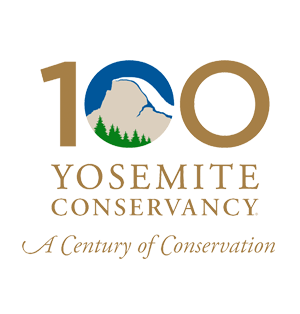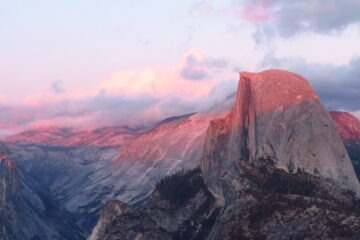This blog was last updated on: October 8, 2025.
**GOVERNMENT SHUTDOWN** As of October 1, 2025, the U.S. government is shut down. Yosemite National Park remains open, but National Park Service (NPS) operations and visitor services are limited.
Please refer to the Yosemite During the Government Shutdown page for more detailed information.
Presidential orders and federal policy changes have impacted park staffing and the National Park Service was been delayed in announcing many visitor services for summer 2025. We will continue updating this blog with Yosemite park updates as more information develops.
Cuts to the federal workforce are severely impacted staffing in national parks — and Yosemite is no exception. The National Park Service (NPS) will likely be understaffed in Yosemite National Park this summer. Last year, the NPS was already operating at a 30% staffing deficit — meaning any other cuts and restrictions to their staffing and funding will deepen that deficit.
It’s always good to be prepared when coming to Yosemite with a plan and a few backups in mind, especially when you want to visit popular trails and lookouts. As Yosemite National Park’s primary philanthropic partner, it is our mission at Yosemite Conservancy to support the park’s people, wildlife, and habitat.
Keep the tips below in mind when planning your summer trips to Yosemite to ensure you are up to date with reservation information and the tools to protect the park during your visit.
TLDR
- Background
- Day-use/peak hours reservations
- Glacier Point & Tioga Roads
- Labor Day Holiday Weekend
- Camping
- Backpacking
- Visitor centers, exhibits, and information stations
- Things to do in Yosemite
- How you can support Yosemite right now
Background
Several park partners help to operate and sustain Yosemite National Park.
Much of Yosemite National Park’s resources are managed by the National Park Service (NPS). NPS staff include the classic “flat hat” rangers, as well as scientists, administration staff, facilities and custodial management, and so many more.
Yosemite Conservancy supports the park (including the NPS) philanthropically, as well as through our in-park operations — educational art and outdoor programs, retail services, visitor information and orientation, and volunteer projects.
Yosemite Hospitality is the park concessionaire, which runs park lodging (The Ahwahnee, Yosemite Valley Lodge, Housekeeping Camp, and Curry Village), Yosemite Mountaineering School, several stores and restaurants, and more.
While in the park, you may also visit places or attend programs run by other park partners, such as the Ansel Adams Gallery, NatureBridge, and Yosemite Hospitality. If the NPS is understaffed and unable to open certain campgrounds, visitor centers, and/or bathrooms, or has limited programming available, park partners can help supplement visitor services.
Day-use/peak-hours reservations
Over the past several years, Yosemite National Park has piloted reservations for day-use visitors. In recent years, reservations were limited to the busiest visitation hours in peak season to prevent traffic congestion, ease parking, and improve visitor experiences.
In late April 2025, Yosemite National Park announced another pilot reservation system for day-use visitors for peak hours during the summer season. Keep reading our FAQ on the 2025 Yosemite reservation system to plan your trip accordingly.
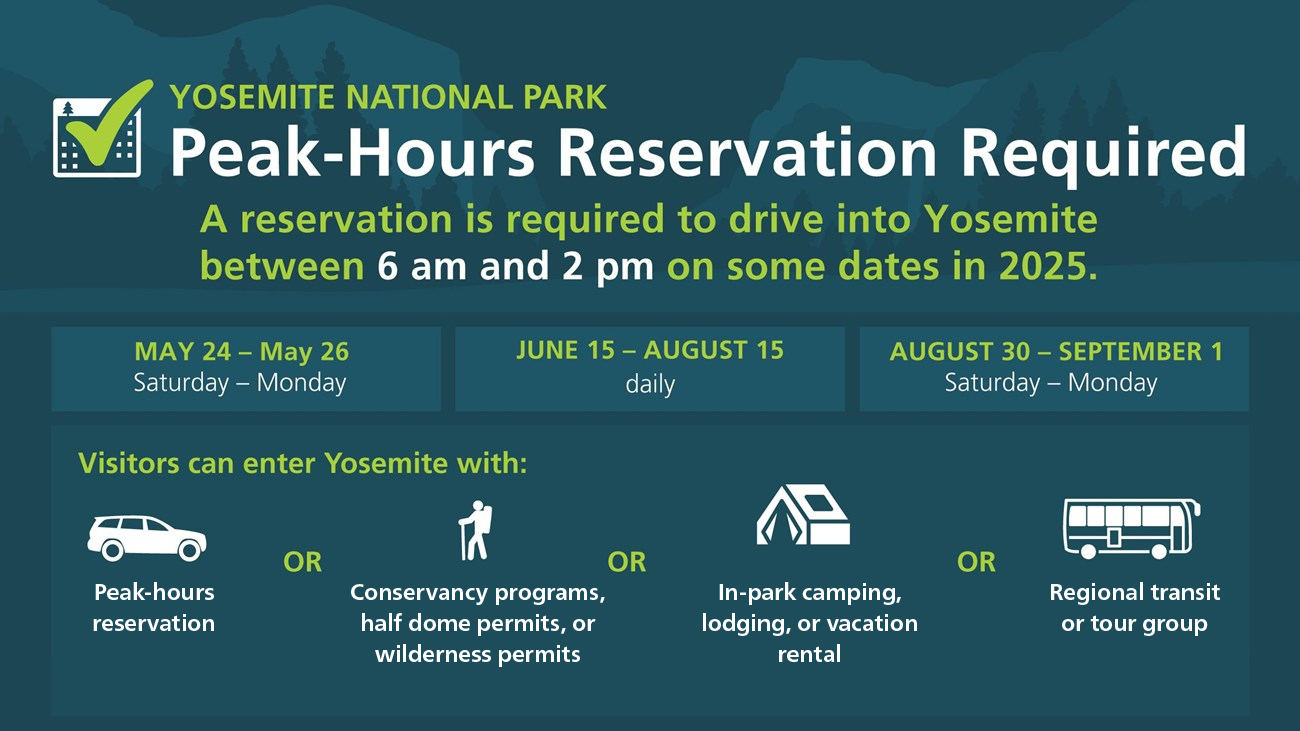
When will the reservation system be in place?
Reservations will be required to drive into or through Yosemite from 6 am to 2 pm on certain days between May 24 through September 1, 2025:
- May 24–May 26 (Memorial Day weekend): Reservation required to enter Yosemite between 6 am–2 pm.
- May 27–June 14: Reservation not required at any time.
- June 15–August 15: Reservation required to enter Yosemite between 6 am to 2 pm every day.
- August 16–August 29: Reservation not required at any time.
- August 30–September 1 (Labor Day weekend): Reservation required to enter Yosemite between 6 am to 2 pm.
On days when reservations are required, you can enter before 6 am and after 2 pm without a peak-hours reservation but will still need to pay the entrance fee.
Where is a day-use/peak-hours reservation needed?
All entrance stations in Yosemite National Park will require reservations, except Hetch Hetchy. You can visit the Hetch Hetchy area of the park when it is open (sunrise to sunset) without a reservation. You will still need to pay the entrance fee when entering from Hetch Hetchy. Entry may be delayed on busy weekends.
How do I get a reservation?
Reservations for all arrival dates (May–August) will be on sale at recreation.gov starting on Tuesday, May 6 at 8 am. A portion of reservations for each date will be held back and released seven days before the arrival date at 8 am on recreation.gov. Many reservations sell out almost immediately, so log in early and be ready right at 8 am.
How long does a reservation last?
Each reservation lasts for three consecutive days (including arrival date).
How many people does my reservation count for?
Each reservation covers one vehicle. Separate reservations are not required for people traveling in the same vehicle.
Do I still have to pay the entrance fee?
Yes. Entry to the park always requires the applicable entrance fees. Entering the park during the dates noted above, visitors must also purchase a reservation ahead of time for $2 on recreation.gov. You will still need to purchase a reservation even if you have an America the Beautiful, the National Parks and Federal Recreational Lands Pass, including the annual pass, senior pass, military pass, or fourth grader pass.
Will I need a reservation if I already have lodging, camping, wilderness permits, or activities booked?
If you have a booking for lodging, camping, backpacking permits, or activities in the park during the reservation window, it is likely that you will not need to acquire a day-use reservation to enter the park. Please note that reservations for lodging, vacation rentals, or campgrounds outside the park do not provide access to Yosemite when the reservation system is in place.
Bookings that do not require a reservation to enter Yosemite are:
- Any campground reservation within the park boundary: (Upper Pines, Lower Pines, North Pines, Camp 4, Wawona, Bridalveil Creek, Hodgdon Meadow, Crane Flat, Tamarack Flat, Yosemite Creek, or Porcupine Flat.)
- Any approved wilderness permits within Yosemite.
- Any hotels and lodging within Yosemite: (Curry Village, Housekeeping Camp, Yosemite Valley Lodge, The Ahwahnee, Tuolumne Meadows Lodge, and the High Sierra Camps; Private lodging or vacation rental in Wawona, Yosemite West, or Foresta).
- Any of Yosemite Conservancy’s Outdoor Adventure programs, art retreats, Custom Adventures, art classes, or custom art programs. Please note: Conservancy naturalist walks and drop-in art activities do not include a reservation.
What if I want to visit Yosemite, but no more reservations are available for that day?
If reservations are sold out for your ideal trip dates to Yosemite, consider the following options:
- Traveling on weekdays, when possible, may make it easier to acquire a reservation as weekends often see more competition for reservations.
- Conservancy programs — Outdoor Adventures, art retreats and classes, Custom Adventures, and custom art programs — are unique and tailored experiences to explore and experience Yosemite. Depending on your program, it may include both a camping and entrance reservation, please confirm before booking.
- Consider visiting during less busy months in the spring, fall, or winter.
- On days when reservations are required, we ask that you please DO NOT show up without a reservation between the hours of 6 am and 2 pm . You will not be let in at the entrance station, and vehicles blocking roads will be cited.
Why are reservations important?
Over-crowding in natural spaces in Yosemite can lead to less enjoyable visitor experiences — like a lack of adequate parking and traffic — and can also drastically impact the habitat and wildlife in the park. Reducing over-crowding during Yosemite’s busiest season prevents an influx of trash that can harm wildlife if not properly managed and the trampling of plants that are vital parts of the ecosystem.
Glacier Point & Tioga Roads
Glacier Point Road to the South of Yosemite Valley and Tioga Road to the North, both close seasonally due to winter conditions. The roads usually reopen in late May or early June. We will continue to update this blog as new information becomes available, but you can also check the NPS website for the current closure information.
Glacier Point Road opens on May 10 for the 2025 summer season. Once open, visitors will be able to drive all the way to Glacier Point.
Tioga Road opens at 8am on May 26 for the 2025 season. Limited services will be available to visitors traversing Tioga Road. Visitors are urged to bring their own appropriate levels of food and water and utilize food lockers if away from their vehicle. Restroom (vaults and portables) along Tioga Road will be open. No other services will be available along Tioga Road. There’s no early access to cyclists this year. Click here to learn all about Tioga Road in summer.
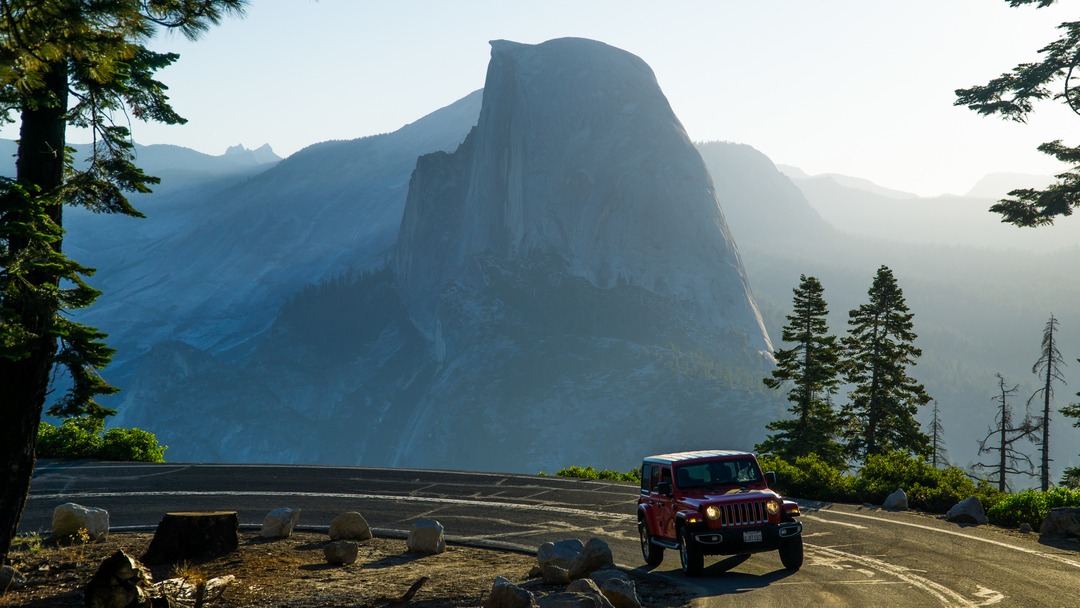
Photo by Andrew Collins
Labor Day Weekend
Labor Day Weekend is one of the most popular — and spectacular — times to visit Yosemite. With a chill in the air and many trails still open after the summer season, this holiday weekend draws thousands of visitors eager to experience the park’s beauty. If you’re planning to be among them, a little preparation goes a long way.
Most importantly, make sure you have a reservation before arriving at the park. Reservations cannot be issued at the gate, and you may be turned away if you don’t have one!
Yosemite requires a peak-hours reservation for vehicles entering the park between 6 a.m. and 2 p.m. daily for Labor Day Weekend (see below for all reservation details and FAQs).
The initial batch of reservations sell out quickly, but a limited number of additional reservations become available seven days before your planned visit at 8 a.m. PT on recreation.gov.
To help make your holiday visit smooth and enjoyable:
- Plan ahead. Set a reminder for the 7-day-ahead reservation release.
- Consider off-peak hours. Visitors without a peak-hours reservation can still enter the park before 6 am or after 2 pm. Early morning or late-day entries can mean lighter traffic and more serene experiences.
- Be patient and kind. Park staffing has been impacted by federal workforce reductions, and rangers and Conservancy volunteers are doing their best to support a safe and welcoming environment for all.
Camping
Yosemite National Park will open all 13 park campgrounds in the summer of 2025 — the first time since 2019 that all campgrounds have been open at the same time. Check out the Conservancy’s camping blog to find the right campsite for your trip!
White Wolf Campground will open on June 20, and Tamarack Flat Campground will open on June 23. On June 15 at 7am PDT, reservations will be released daily and become available two weeks in advance for both campgrounds on recreation.gov. (Remember, there is no potable water at either campground. While there are vault toilets at Tamarack Flat, there are only portable toilets at White Wolf).
Yosemite Creek Campground will open on July 1. Starting on June 17 at 7am PDT, reservations will be released daily, two weeks in advance, on recreation.gov for sites 1-40. (Drinking water is not available at this campground, however, vault toilets are available).
Opening dates for Bridalveil Creek, Porcupine Flat, and Tuolumne Meadows Campgrounds will be announced soon. We will update this blog as soon as we have any updates on this process.
All other park campgrounds are listed on recreation.gov and are currently available for booking.
Other future booking windows:
- June 15: Reservations for arrivals from September 15 through October 14 for Upper Pines, Lower Pines, North Pines, Wawona, and Hodgdon Meadow will release.
- July 15: Reservations for arrivals from October 15 through December 14 for Upper Pines, Lower Pines, North Pines, Wawona, and Hodgdon Meadow will release. As of July 15, campgrounds will be back on our regular release schedule. Check out the Conservancy’s campground blog for more information about the regular schedule.
Making a campground reservation in Yosemite National Park often requires planning, as reservations often sell out within minutes of being released. Check out our tips and recommendations of everything you need to know about car camping in Yosemite National Park.
Backpacking
More than 90% of Yosemite National Park’s 704,028 acres is federally designated wilderness. Maintaining wilderness areas requires staff — restoration crews, wilderness rangers, and more. This year, Conservancy donors are supporting the restoration of Kerrick Meadow and the Keep It Wild wilderness restoration crew.
The Yosemite Valley Wilderness Center opened on April 25, 2025. Wilderness permit reservations are available through recreation.gov for all trailheads in Yosemite Valley and Hetch Hetchy from April 25. Yosemite Valley and Hetch Hetchy Backpackers Campgrounds are open.
The Wilderness Operations team at Yosemite Conservancy manages the park’s wilderness permit reservation system, in partnership with the National Park Service. Whether you’re looking to go on a one-night backpacking trip or a multi-day adventure, learn more about acquiring wilderness permits here. And if you’re looking for a guided wilderness adventure, check out our Outdoor Adventures.
Visitor centers, exhibits, and information stations
During peak season in Yosemite National Park, there are various locations that provide visitor information, education, and orientation services to the public. Hours for these locations are all listed in the Yosemite Guide, the park newspaper that is distributed at entrance gates. If staffing shortages impact these locations, changes will be noted here.
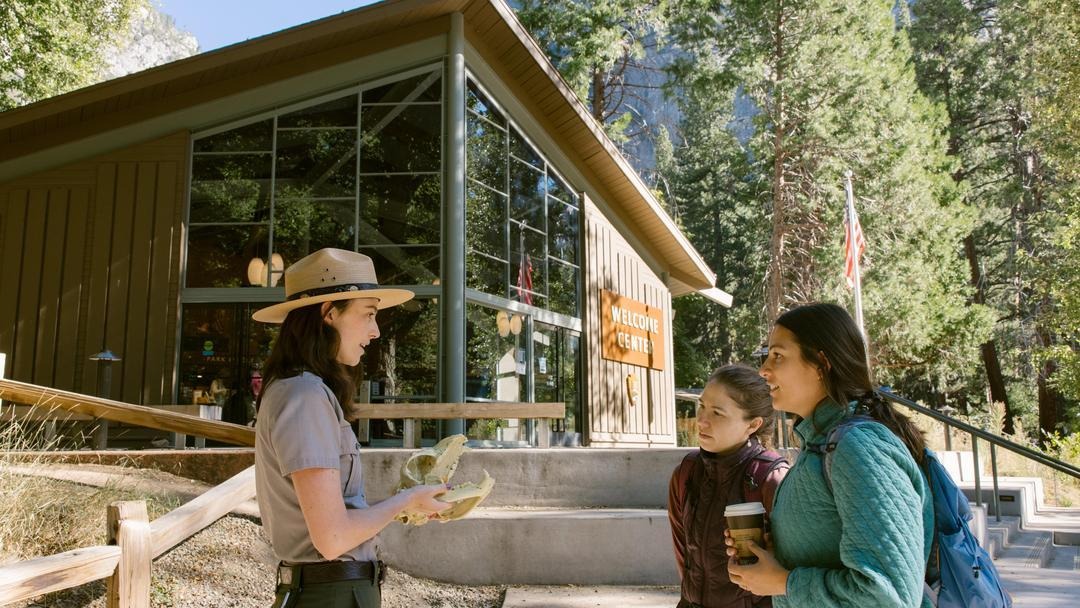
Photo by Jenn Emerling
Things to do while you’re in Yosemite
- Naturalist walks: Join our naturalists for casual, one- to two-hour programs in Yosemite Valley! Join us for birding and wildlife walks in the spring, and a sunset walk or stargazing programs all season.
- Art classes: Connect with Yosemite through art. Join us for a class or creative activity that will help you see the natural world in a new way while in Yosemite Valley. Our classes follow a variety of mediums and focuses, including watercolor, sun printing, sketching, nature journaling, paint and sips, kids’ art classes, and more.
- Outdoor Adventures: Discover the awe-inspiring wonders of Yosemite’s natural and cultural history with our expert instructors on an Outdoor Adventures. We have a variety of adventures planned for 2025 — from camping and day hikes, backpack excursions, and in-depth trips focused on flora and fauna.
- Art retreats: Our art retreats are an in-depth way to get your creativity flowing in Yosemite. Backpack or tent camp with our art retreats and receive multi-day art instruction and peaceful days spent creating in nature.
- Custom art classes and adventures: Looking to do something specific in Yosemite? Our Outdoor Adventure naturalists can create the perfect custom adventure, and our art instructors are available to build the perfect art program for you and your group.
- Our Yosemite favorites: While you’re in Yosemite, check out some of our favorite places:
How you can support Yosemite right now
If you visit Yosemite in the 2025 season, be aware that NPS staffing shortages could result in fewer open restrooms, decreased ranger presence, closed visitor centers, and congested roads. parking lots, and trails. Please be mindful of staff limitations and engage respectfully with park personnel during your visit. Despite the uncertainty of what reservations and visitation will look like in Yosemite this summer, there are actions you can take as a visitor and supporter of Yosemite to ensure that this park is preserved and cared for.
Congestion & Traffic
- Depending on staffing at entrance gates, lines may occur while entering the park. During a typical summer season, visitors have been known to wait for an hour or more — especially on holiday weekends. Please be courteous to park staff as they work to provide the best visitor services possible.
- Please only park cars in designated parking spots. If your trailhead is full, please consider one of your backup options, and either try another day or return later in the day depending on your trip planning. Also consider taking a free Yosemite shuttle to the trailhead.
- If a day-use reservation system is not implemented, expect traffic lines at entry gates and plan accordingly.
Protecting Flora & Fauna
- Yosemite National Park is home to many black bears and other wildlife. Bear spray and bear mace is not allowed or necessary in the park. The best way to keep yourself safe is to keep your distance from wildlife — do not approach any wildlife and do not feed them. Learn more about bear and wildlife safety here.
- One of the most important ways to care for the earth and local wildlife in Yosemite is through food safety and utilizing the bear-proof lockers in the park. By not leaving out unattended food and properly storing your scented items, food, and trash, you’re ensuring that our bears stay wild and our park stays clean. Learn more about how to use these lockers here.
- Safe storage options include hotel rooms, bear boxes, bear canisters, and vehicles during the day if the food is not visible from the outside.
- Only walk on designated trails and paths. Walking outside of designated paths harms plants and meadows which are critical parts of the ecosystem.
- Take only pictures: Don’t take home rocks, flowers, leaves, cones, sticks, or anything else — they are all a part of a delicate and important ecosystem in Yosemite. Take only pictures, your memories, and items from our stores.
- Learn more about Leaving No Trace when you’re in the wilderness.
Protect Yourself & Your Trailmates
- Fire Safety
- Please follow all rules and regulations regarding where fires are allowed in Yosemite National Park.
- Never leave a fire unattended.
- When you are done with your fire, please be sure to drown, stir, and feel that the ashes are cool before leaving the fire.
- Personal safety
- Please do not approach waterfalls. Leaving designated pathways and stepping out onto smoothed river rocks can result in injury.
- Swift water currents can be dangerous during peak runoff periods.
- Listen to your body and to your group when hiking — if you or someone in your group does not feel comfortable with continuing, be prepared to turn around.
- Pack like a park ranger! Include the 10 essentials in your pack. Extra water and snacks are always great, especially in the summer months.
- Be aware of your surroundings when in nature. Noticing the tree roots across your path or how close you are to the edge of an overlook can ensure a safe and happy Yosemite experience.
Trash
- On hikes or at your campground, take some time to pick up any trash that you see, even if it does not belong to you. Trash can be deposited in available trash bins and dumpsters.
- Please do not leave trash on top of overflowing trash cans or in bathrooms. If a trash bin is full, please hold onto your trash until you come across a bin with space in it.
- Bring extra trash bags and as many items that are reusable as possible to prevent trash overflow in the park. A great way to reduce and reuse is to repurpose empty bread bags or produce bags for impromptu trash bags while hiking.
Bathrooms
- When nature calls, it is important to answer that call — appropriately. Please use designated bathroom facilities. Due to staffing shortages some bathrooms maybe be closed and less frequently serviced. Having a map and an understanding of toilet locations nearby could be critical.
- If you’re in the backcountry, as usual, remember these guidelines for using the bathroom safely.
Support Yosemite from afar
- For more than 100 years, Yosemite Conservancy has been supporting the conservation of Yosemite’s natural resources. Thanks to generous donors, we have provided more than $172 million in grants to Yosemite for more than 900 projects. In 2025, the Conservancy is providing $18 million in total support and funding around 60 new grants to the National Park Service for projects in the park. Our work as partners to the NPS is more crucial than ever and we couldn’t do it without the support of our donors. Make a gift today.
- Share information about recreating responsibly and Leaving No Trace with your loved ones. Everyone can be a steward of public lands by recreating with care.
- Contact your elected officials to express your support for parks.
- Looking for more ways to support Yosemite and Yosemite Conservancy? Check out our blog 100 ways to support Yosemite.
